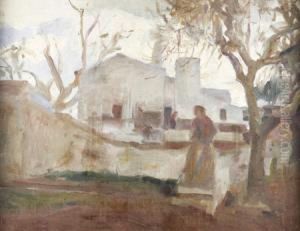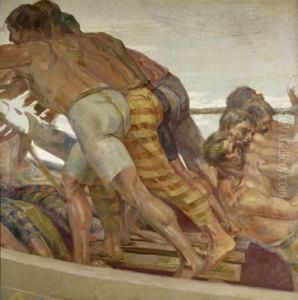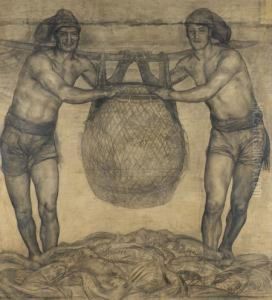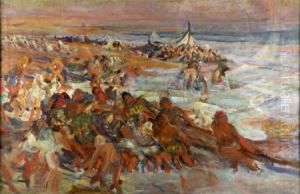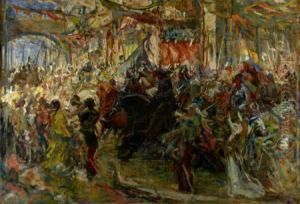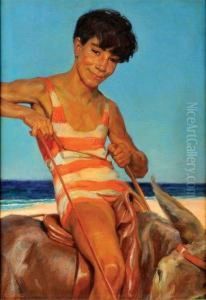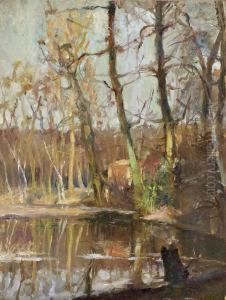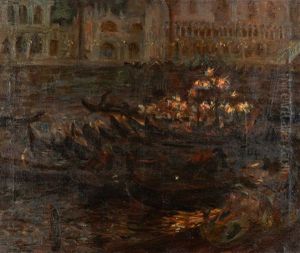Adriano Sousa Lopes Paintings
Adriano Sousa Lopes was a prominent Portuguese painter and engraver, whose work significantly contributed to the art scene in Portugal during the late 19th and early 20th centuries. Born on February 18, 1879, in Vila Viçosa, he was a key figure in the transition from romanticism to modernism in Portuguese art. Sousa Lopes studied at the Academy of Fine Arts in Lisbon, where he developed a strong foundation in drawing and painting. His talent and dedication to art were evident early in his career, leading him to further his studies abroad, which was a common practice among European artists seeking to expand their horizons and skills.
In 1903, Sousa Lopes continued his education in Paris, at the École des Beaux-Arts, and was profoundly influenced by the burgeoning contemporary art movements of the time, including Impressionism. His work began to reflect a keen interest in light and color, characteristic of the Impressionist style, yet he maintained a distinct personal touch that set his work apart. During his time in France, he interacted with various artists and intellectuals, which enriched his artistic vision and approach.
Sousa Lopes' contributions to art were not limited to his paintings. He was also a skilled engraver and participated in numerous exhibitions, both in Portugal and internationally, gaining recognition and awards for his work. His themes often revolved around landscapes, historical scenes, and daily life, capturing the essence of Portuguese culture and the beauty of its countryside with sensitivity and a masterful use of light.
Perhaps one of the most significant periods of Sousa Lopes' career was his role as an official war artist during World War I. Appointed by the Portuguese government, he was tasked with documenting the involvement of Portuguese troops in the conflict. This experience deeply impacted him, and his war-related work is noted for its poignant realism and emotional depth, providing a unique artistic documentation of Portugal's role in the war.
After the war, Sousa Lopes continued to evolve his artistic style, and his later works showed an increasing interest in expressionism, though he never fully abandoned the impressionistic sensibilities that marked his earlier work. He also played a significant role in the Portuguese artistic community, serving as a professor and later director at the Escola Superior de Belas-Artes de Lisboa, where he influenced a new generation of Portuguese artists.
Adriano Sousa Lopes passed away on January 22, 1944, in Lisbon. His legacy is preserved in his diverse body of work, which remains an important part of Portugal's cultural heritage. Today, his paintings and engravings are held in high esteem and can be found in museums and private collections both in Portugal and internationally. Sousa Lopes is remembered as a pivotal figure in Portuguese art, whose contributions helped shape the country's artistic landscape in the first half of the 20th century.
